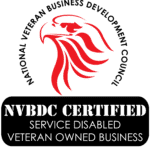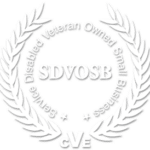When it comes to federal construction projects, safety isn’t just a priority—it’s a requirement. The Activity Hazard Analysis (AHA) process is a critical part of ensuring worker safety, mitigating risks, and maintaining compliance with EM 385-1-1 guidelines. Whether you’re new to AHAs or looking to refine your approach, this guide breaks it down with practical insights and best practices.
What Is an AHA?
Imagine stepping onto a construction site without a clear plan for safety. That’s where an AHA comes in—it’s a structured approach to analyzing potential hazards for specific construction activities. It serves as a proactive method of identifying risks before they become incidents.
Under the EM 385-1-1 safety guidelines, every definable feature of work (DFOW) in the project requires an AHA to ensure that all risks are assessed, addressed, and managed before work begins. This process not only improves site safety but also fosters a culture of hazard awareness among workers.
Why AHAs Matter
Beyond being a regulatory requirement, AHAs play a crucial role in:
- Protecting Workers: Identifying and mitigating risks ensures safer job sites.
- Regulatory Compliance: Federal agencies enforce strict safety protocols—AHAs help meet those standards.
- Efficient Project Execution: Safety incidents lead to costly delays; an effective AHA helps maintain workflow continuity.
- Legal Protection: Proper documentation can be crucial in defending against claims or regulatory penalties.
Building an Effective AHA: Step by Step
Creating an AHA doesn’t have to be overwhelming. Here’s a structured approach to developing an effective analysis:
1. Identify the Activity
Each construction project consists of multiple definable features of work (DFOW). Break down the job into specific steps to ensure that each phase is thoroughly examined. Examples include:
- Excavation
- Concrete pouring
- Electrical installations
- Roofing operations
- Heavy equipment operation
2. Recognize Hazards
For each step, conduct a hazard analysis. Look for potential dangers in the following categories:
- Physical Hazards: Falls, struck-by, caught-in, electrical, noise exposure.
- Chemical Hazards: Toxic fumes, dust, solvents, welding fumes.
- Environmental Hazards: Weather conditions, confined spaces, unstable ground.
- Ergonomic Hazards: Repetitive motion injuries, heavy lifting, awkward postures.
3. Implement Control Measures
Once hazards are identified, implement control measures to minimize risks. These include:
- Engineering Controls: Guardrails, ventilation systems, soundproofing.
- Administrative Controls: Safety training, job rotation, warning signs.
- Personal Protective Equipment (PPE): Hard hats, respirators, gloves, fall protection harnesses.
4. Assign Responsibilities
A well-defined AHA ensures that every team member knows their role in risk prevention. This includes:
- Supervisors ensuring compliance.
- Workers adhering to safety protocols.
- Safety officers conducting inspections and training.
5. Plan for Emergencies
Each AHA should include emergency response protocols, such as:
- Evacuation plans.
- First aid and medical response procedures.
- Fire prevention and suppression measures.
- Contact information for emergency personnel.
6. Review and Update Regularly
Job sites evolve, and so do their hazards. Regularly revisiting and updating AHAs ensures continued compliance and relevance. It’s critical that these are talked about as frequently as possible with your teams.
What’s New? Changes in the Updated APP Format
The recent updates to the Accident Prevention Plan (APP) format bring significant changes that contractors need to be aware of. These updates aim to enhance safety, integrate technology, and align with sustainability goals.
Key Updates Include:
- Expanded Hazard Sections: Cybersecurity risks now included to address vulnerabilities in construction technology systems.
- Integration with Environmental Programs: Sustainability initiatives like energy efficiency and waste reduction are now part of safety planning.
- Enhanced Training Documentation: Stricter tracking of training, competency evaluations, and retraining schedules.
- Subcontractor Safety Plans: Greater emphasis on subcontractor-specific hazard plans to ensure all parties align with the APP.
- Technology Use: Encourages digital platforms for tracking safety incidents, near misses, and compliance records.
Best Practices for Adapting to the New APP Requirements
To ensure smooth adaptation to these changes, contractors should:
- Appoint a Dedicated Safety Officer – Someone who tracks updates and ensures compliance.
- Leverage Digital Safety Platforms – Transitioning to software-based safety tracking minimizes paperwork and streamlines reporting.
- Strengthen Subcontractor Collaboration – Regular safety meetings and coordination efforts can prevent compliance issues.
Bridging the AHA and APP Processes
AHAs and APPs aren’t standalone documents—they work together to form a comprehensive safety framework.
How They Interconnect:
- AHAs provide detailed hazard mitigation for specific tasks, feeding into the broader APP.
- Regular AHA updates should align with the overall APP requirements.
- Both documents should be reviewed together to ensure consistency.
Practical Tips:
- Conduct monthly safety audits to keep both documents aligned.
- Use a single digital platform to manage and integrate safety documentation.
- Schedule regular training sessions to ensure everyone understands new safety measures.
What Else Federal Contractors Should Know
Emerging Safety Trends
- Mental Health & Well-Being: Increasing focus on the psychological aspect of workplace safety.
- Cybersecurity Risks: As construction tech advances, threats to data integrity and digital security rise.
Audit Preparedness
- Keep organized records of all safety documentation.
- Conduct mock audits to identify compliance gaps before an official review.
Agency-Specific Compliance
Different federal agencies have distinct safety expectations. Understanding these nuances can help contractors better tailor their plans:
- USACE (U.S. Army Corps of Engineers): Typically requires more stringent hazard controls.
- VA (Veterans Affairs): Prioritizes infection control in healthcare construction.
- Navy Contracts: May require additional security and environmental protections.
Key Takeaways & Next Steps
For New Contractors:
- Learn the fundamentals of AHA and APP processes.
- Work with experienced consultants to ensure compliance.
For Experienced Contractors:
- Stay updated on evolving safety standards.
- Refresh training programs and documentation regularly.
By proactively adapting to these changes and fostering a strong safety culture, contractors can ensure compliance, protect workers, and maintain efficient operations. If you’re looking to streamline your safety management, leveraging technology and expert guidance is a sm



